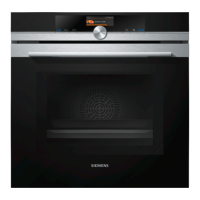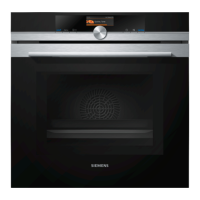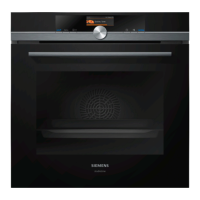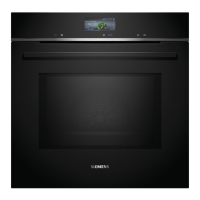en Tested for you in our cooking studio
50
Acrylamide in foodstuffs
Acrylamide is mainly produced in grain and potato
products prepared at high temperatures, such as potato
crisps, chips, sliced bread, bread rolls, bread or fine
baked goods (biscuits, gingerbread, spiced biscuit).
Small yeast cakes Baking tray 3
+
160-180 25-35
Bread and bread rolls
Multigrain bread, 1.5 kg Cake tin 2
+
200-210 35-45
Flatbread Universal pan 3
+
250-275 15-20
Bread rolls, sweet, fresh Baking tray 3
+
170-190 15-20
Bread rolls, fresh Baking tray 3
+
180-200 20-30
Meat
Joint of pork without rind, e.g. neck, 1.5 kg Cookware, uncovered 2
+
180-190 120-140
Pot-roasted beef, 1.5 kg Cookware, covered 2
+
200-220 140-160
Joint of veal, 1.5 kg Cookware, uncovered 2
+
170-180 110-130
Fish
Fish, braised, whole 300 g, e.g. trout Cookware, covered 2
+
190-210 25-35
Fish, braised, whole 1.5 kg, e.g. salmon Cookware, covered 2
+
190-210 45-55
Fish fillet, plain, braised Cookware, covered 2
+
190-210 15-25
Dish Accessories/cookware Shelf posi-
tion
Type of
heating
Tempera-
ture in °C
Cooking
time in
mins.
Tips for keeping acrylamide to a minimum
General ■ Keep cooking times as short as possible.
■ Cook food until it is golden brown, but not too dark.
■ Large, thick pieces of food contain less acrylamide.
Baking With top/bottom heating at max. 200 °C.
With hot air at max. 180 °C.
Biscuits With top/bottom heating at max. 190 °C.
With hot air at max. 170 °C.
Egg or egg yolk reduces the production of acrylamide.
Oven chips Spread out a single layer evenly on the baking tray. Cook at least 400 g at once on a baking tray so that
the chips do not dry out.

